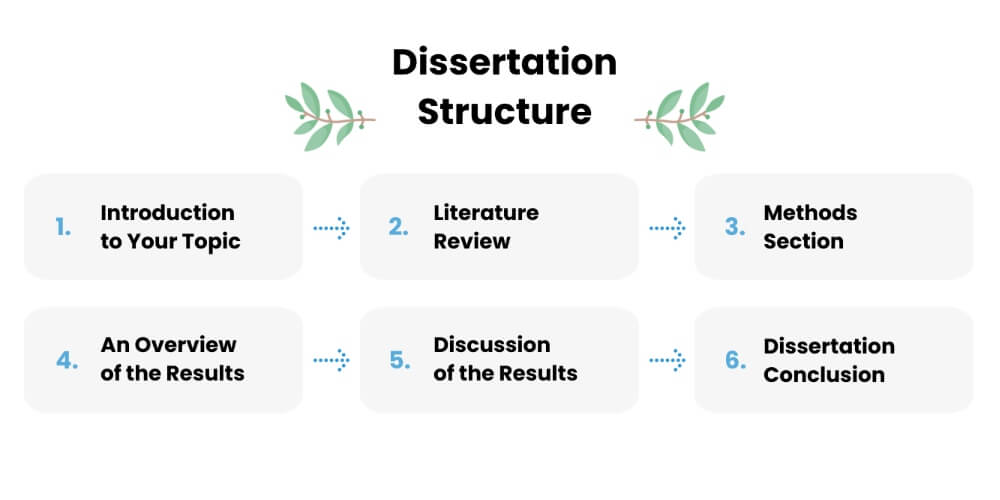
It need not be difficult to write a flawless dissertation. In this tutorial, we walk you through the entire process step by step while addressing important issues like where to begin, A Comprehensive Guide on how to write a perfect dissertation and what makes a great dissertation, and how to structure your dissertation.
Writing the perfect dissertation is a journey, and you’re well on your way. Keep these tips and guidelines in mind, and don’t forget to enjoy the process. Happy writing!
How to Write a Good Dissertation
The journey of writing a dissertation can often feel like embarking on an arduous climb up a mountain. But with the right approach, it becomes a manageable and rewarding journey.
To begin this expedition, selecting a topic that genuinely interests you is paramount. Your passion for the subject matter will not only sustain you through the process but will also shine through in your writing.
Expert Tip: Think of your topic as the first step of your journey. Like a hiker choosing a trail, pick a path that excites you.
What Makes a Great Dissertation?
A great dissertation is akin to preparing a gourmet meal. It’s not just about the ingredients; it’s about the artful preparation and the delightful presentation. Here are the essential ingredients:
1. Original Research: A great dissertation contributes something new to your field. It doesn’t merely rehash existing knowledge; it adds to it.
2. Clear Structure: Just as a chef organizes the courses of a meal, your dissertation should have a clear structure. It should flow logically from the introduction to the conclusion, with each section building on the previous.
3. Thorough Analysis: Like savoring a fine wine, your dissertation should be deeply analyzed. Don’t just present data; interpret it, discuss its implications, and offer insights.
Starting Your Dissertation Journey
The beginning of any journey can be overwhelming, but breaking it down into smaller steps makes it much more manageable.
1. Research Proposal: Think of your research proposal as the map for your dissertation journey. It should outline your research question, objectives, and the methods you’ll use to answer them.
2. Literature Review: Imagine this as the preparation before your journey, where you gather all the supplies you’ll need. Dive into existing research on your topic. What’s been done before, and where does your work fit in?
3. Methodology: This is the compass of your journey, guiding you in the right direction. Explain how you’ll gather and analyze data. This section is the heart of your dissertation.
Understanding the Dissertation Structure

Formatting your dissertation properly is like setting the table for an elegant dinner. Follow these guidelines:
1. Title Page: This is the welcoming mat. Include your title, name, institution, and the date.
2. Abstract: Think of this as the menu – it provides a concise summary of what your dissertation offers.
3. Table of Contents: Your readers’ roadmap – it helps them navigate your work.
4. Introduction: This is like the grand entrance, where you set the stage with your research question and objectives.
5. Literature Review: It’s the appetizer – a taste of what’s already out there.
6. Methodology: Think of this as the recipe section – how are you going to prepare your research?
7. Findings: This is the main course – where you serve up your research results.
8. Discussion: This is the lively conversation over dinner, where you analyze and interpret your findings.
9. Conclusion: It’s the dessert, sweetening the entire experience. Summarize your dissertation and highlight its significance.
10. References: Like citing your sources in a research paper, this acknowledges where you drew your inspiration.
The Purpose of a Dissertation
Why undertake this journey? A dissertation serves several purposes:
1. Research Skills: It’s like a rigorous training regimen for your research and analytical skills.
2. Contribution: You’re not just a consumer of knowledge; you’re a creator. Your dissertation adds to the body of knowledge in your field.
3. Academic Recognition: Completing a dissertation is a significant milestone in your academic journey. It’s a testament to your dedication and expertise.
4. Personal Growth: Much like any journey, you’ll encounter challenges. It’s an opportunity for personal growth and resilience.
How to Write a Perfect Dissertation Step-by-Step
Now, let’s break down the process into manageable steps, just like a hiker takes one step at a time.
1. Choosing a Topic: Imagine you’re selecting the trailhead for your hike. Find a topic that genuinely interests you; it will make the journey more enjoyable.
2. Research Proposal: This is your trail map. Craft a solid research proposal outlining your research question, objectives, and methodology.
3. Literature Review: Think of this as gathering your supplies. Dive into existing research on your topic to understand what others have done.
4. Methodology: This is where you plan your journey. Detail your research methods – what tools and techniques will you use?
5. Data Collection: Collect data meticulously, like a hiker collecting memories. Ensure it aligns with your research objectives.
6. Data Analysis: Analyze your data rigorously. Use graphs, charts, and statistics to support your findings.
7. Discussion: Interpret your findings, just as a hiker interprets the landscape. What do your results mean in the context of your research question?
8. Conclusion: Summarize your dissertation, much like capturing the essence of a journey in photographs. Restate your main findings and their significance.
9. Editing and Proofreading: Review your work for clarity, coherence, and grammar. It’s like ensuring your hiking gear is in good condition.
10. Final Touches: Format your dissertation as per guidelines. Add references, appendices, and acknowledgements, and take care of plagiarism. It’s just as a hiker returns home and shares their adventures.
Remember, writing a perfect dissertation is a marathon, not a sprint. Take it one step at a time, and you’ll reach the summit of academic achievement with flying colors!
FAQs
Q1: How long should a dissertation be?
A1: The length varies but typically ranges from 10,000 to 15,000 words. Check your institution’s guidelines for specific requirements.
Q2: Can I change my dissertation topic after starting?
A2: It’s possible but not advisable. Changing topics can be time-consuming and disrupt your progress. Consult your advisor before making such a decision.
Q3: How do I handle writer’s block during dissertation writing?
A3: Writer’s block is common. Step away from your work, take a break, and return with a fresh perspective. Sometimes, a change of scenery or talking to peers can help.
Q4: What’s the difference between a thesis and a dissertation?
A4: The terms are often used interchangeably, but there can be distinctions. Generally, a thesis is a requirement for a master’s degree, while a dissertation is for a doctoral degree. However, this can vary by country and institution.
Q5: Can I use humour in my dissertation?
A5: While dissertations are typically formal, some light humour can engage readers. However, use it sparingly and ensure it doesn’t undermine the scholarly tone of your work.